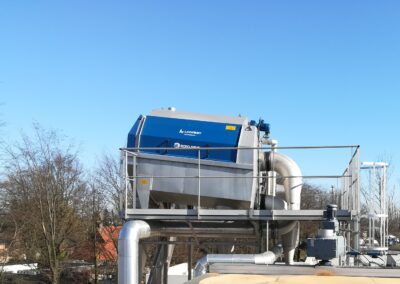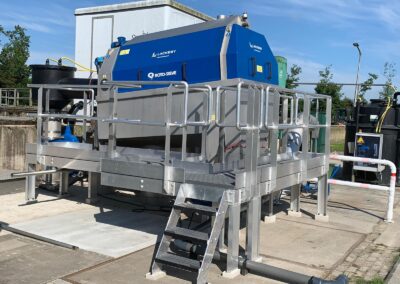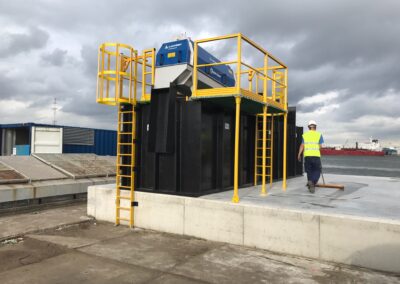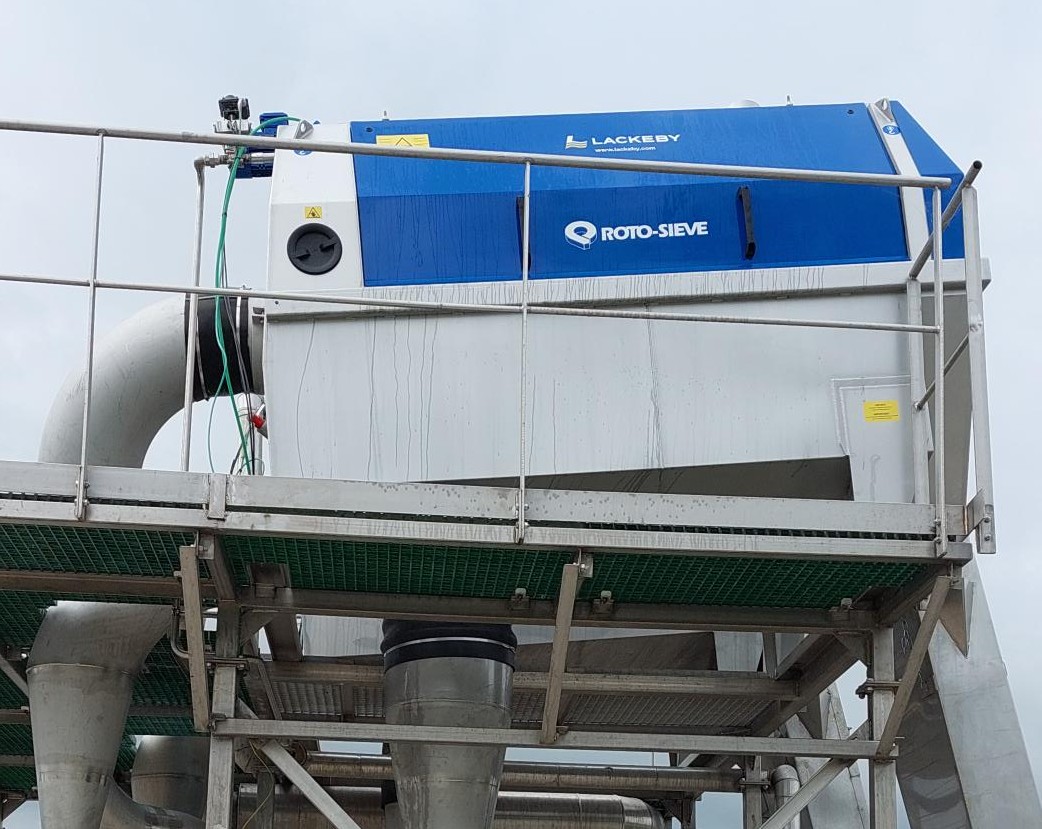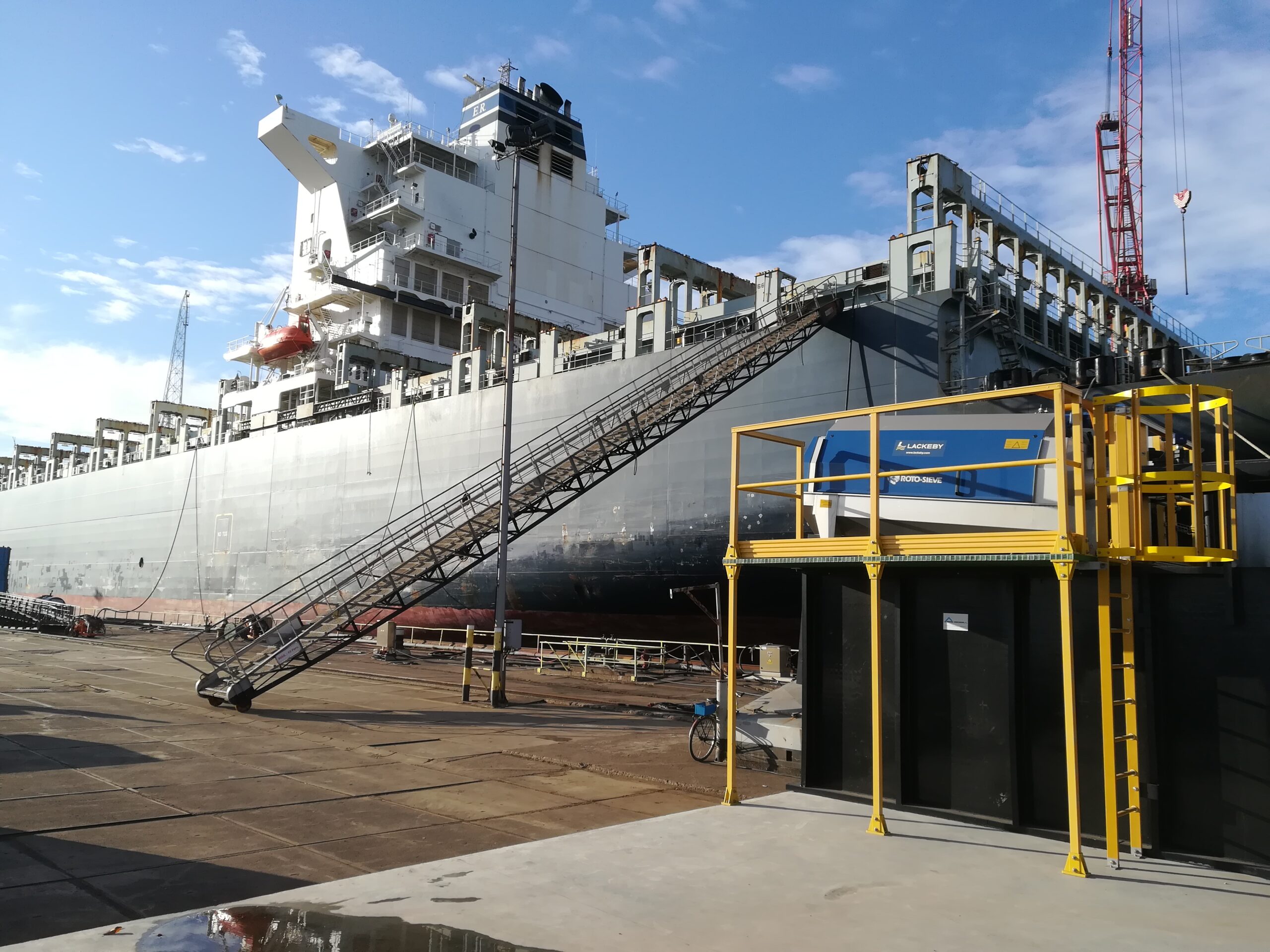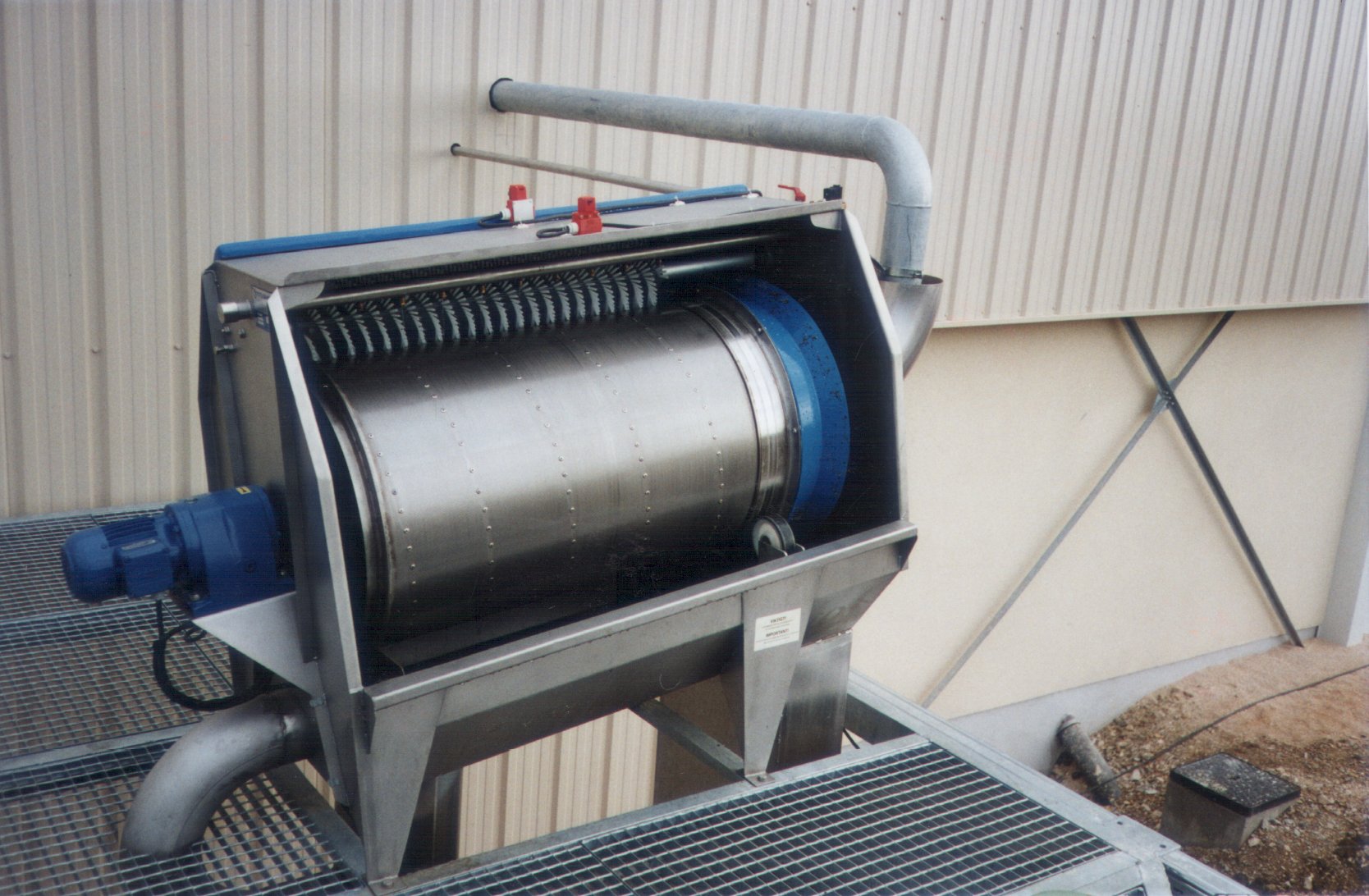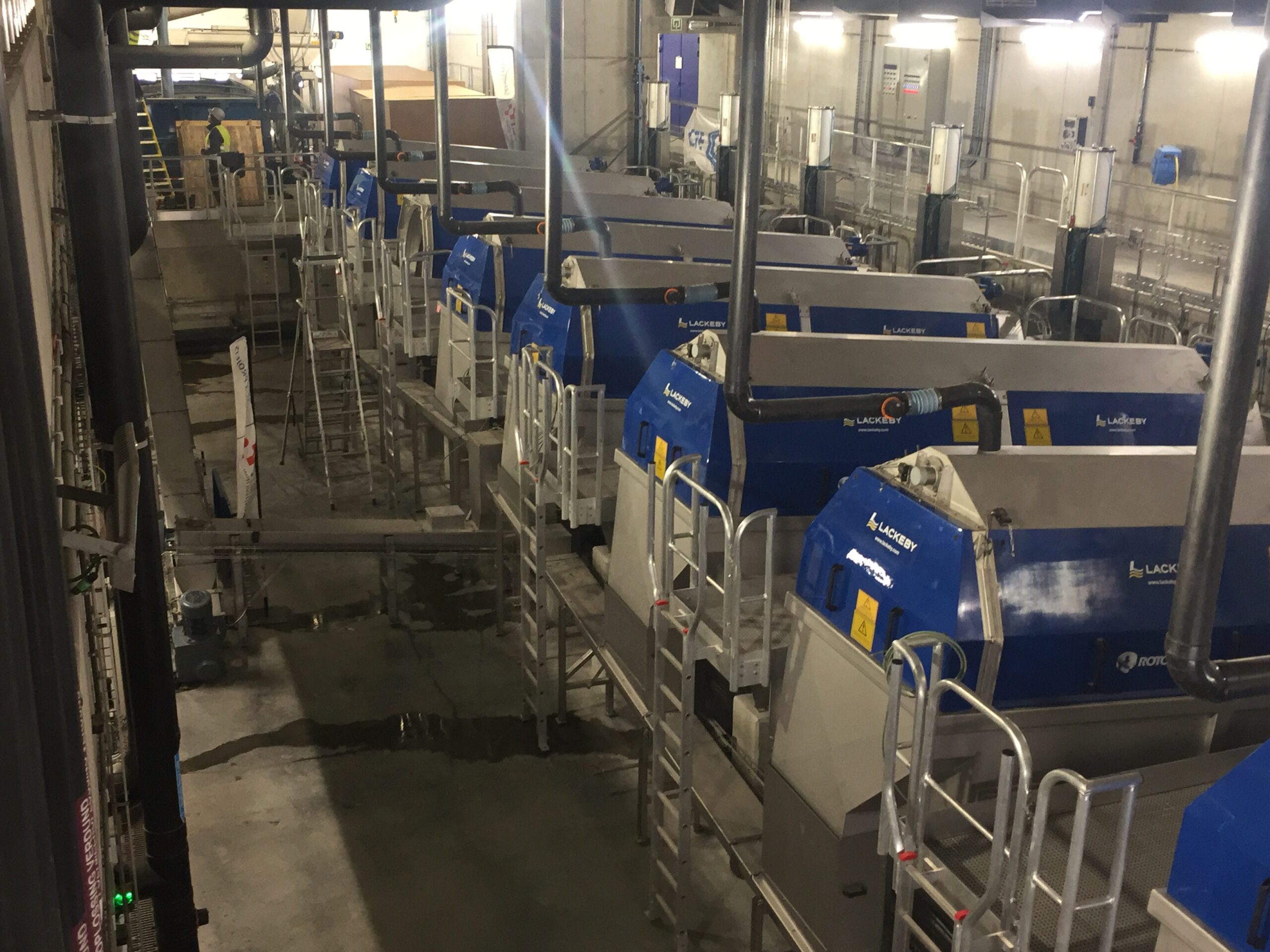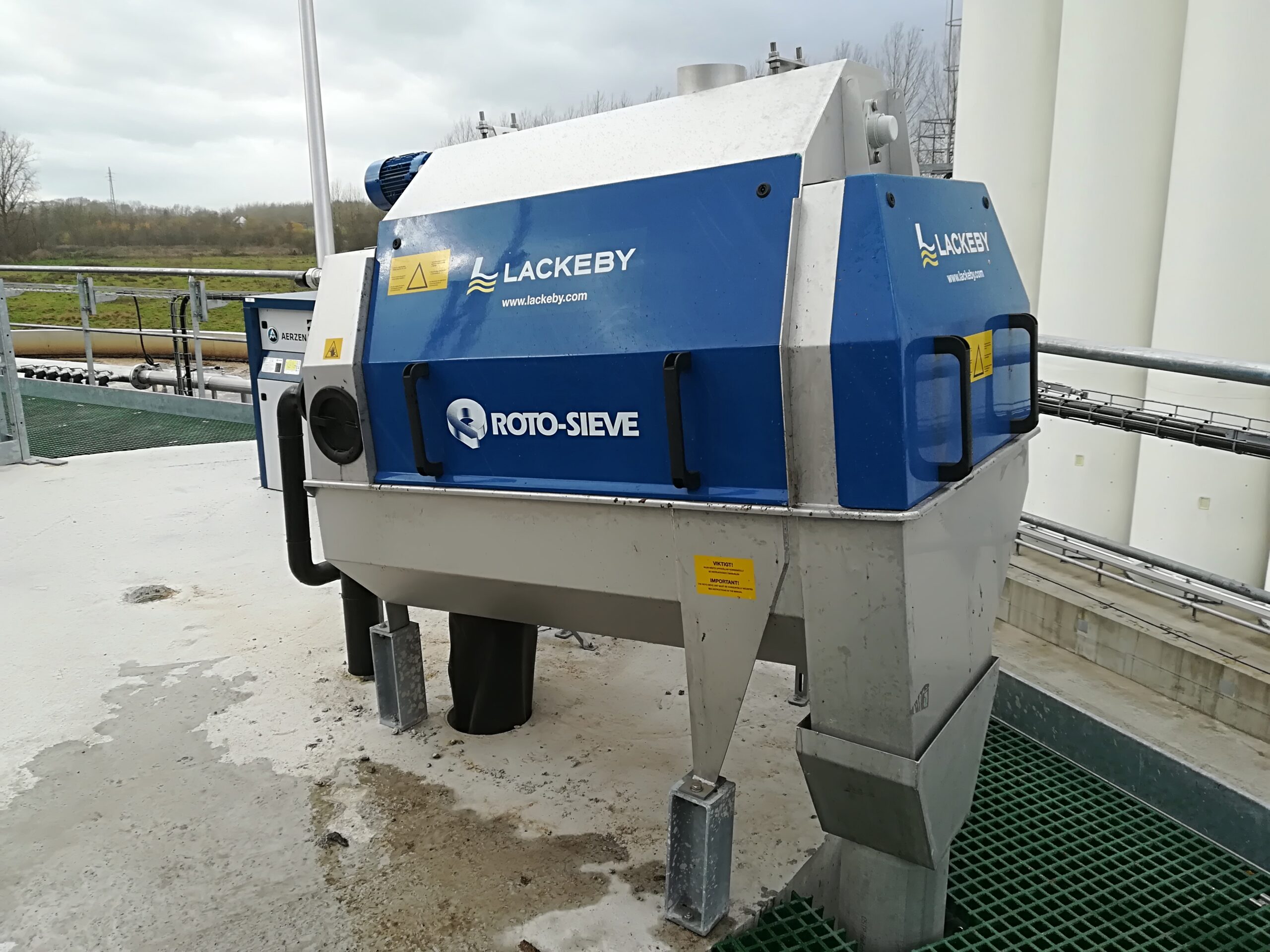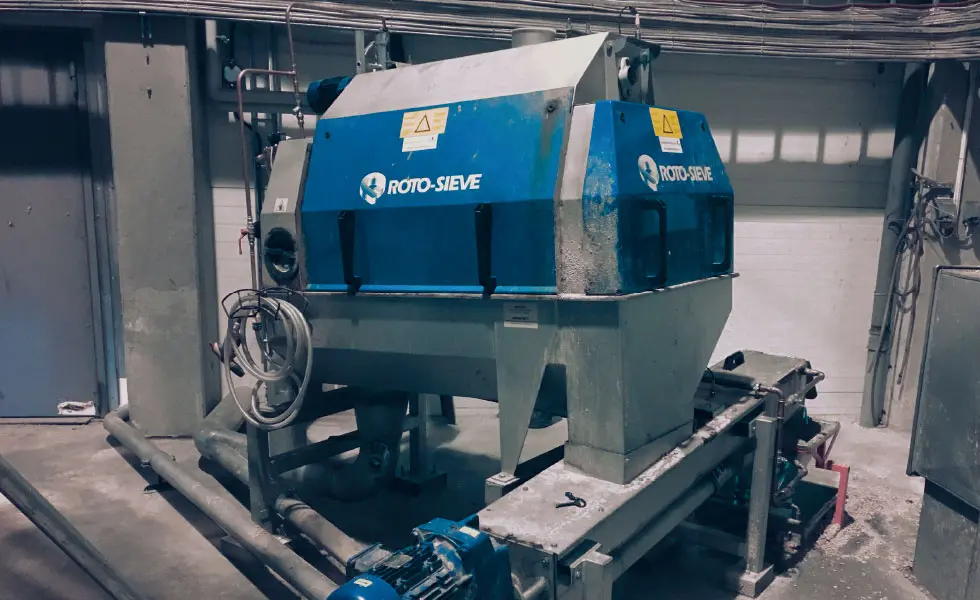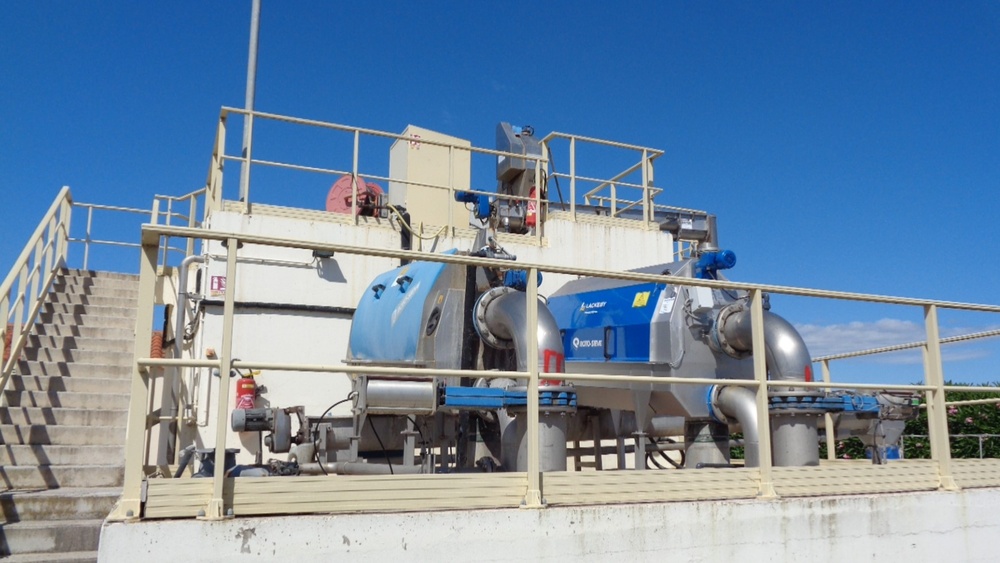Drum screens for water treatment Roto-Sieve
Grit removal is an important step in the wastewater and process water treatment process. The Roto-Sieve® rotating drum screen removes solids and fibers from the liquid stream. The drum screen is often used in the preliminary stage of water treatment. The Roto-Sieve can also be used to remove solids from process water, for example in plastics recycling.
For septic material screening, there are septic material receiving units.
A Roto-Sieve is a rotary screen, with internal feed, slightly inclined drum and round perforations. Round perforations retain fibers and hairs much better than slotted openings.
TASK is the representative of Läckeby AB for the Benelux. This family business was founded in 1935. Currently, the third generation, Magnus Axelsson, is at the helm. Besides Roto-Sieve drum screens, Läckeby also has an extensive range of equipment for water treatment and energy recovery.
By the way, did you know that all spare parts are always available from stock? Even for Roto-Sieves older than 30 years! Sustainable design saves labour hours and contributes to the circular economy.
TASK and Läckeby think with you: we do not shy away from any question, small adjustments for a more performant sieving process are always possible. We gladly put our many years of experience in water treatment and sieving techniques at your service.

TASK is the exclusive Benelux distributor for the range of Lackeby products. Läckeby produces equipment for water treatment and heat recovery. These units are produced in Sweden.
How does a Roto-Sieve work?
Why choose a Roto-Sieve drum screen?
self-cleaning
minimal maintenance
high operational reliability
high degree of separation
long life
compact device
completely closed system, with no odor problems
easy installation and operation
internally fed (with pump or gravitational)
low energy consumption
wide range of capacities: 5 to 1,500 m³/h
advanced drive system without support wheels
easy access to the drum thanks to lightweight lids
Roto-Sieve® is the drum screen with the lowest number of moving parts and wear parts on the market.
References in different industries
Breweries, malting & bottling plants
Municipal and city wastewater treatment plants (WWTP and KWZI).
Drinking water production
Shipping and shipyards
Dredging
Textile Industry
Paper and cardboard processing industry
Livestock feed production
Slaughterhouses (cattle, chickens, etc.) & offal processing
Plastic processing plants and plastic recycling
Recycling companies
Field smelters
Tanneries
Chemical industry
Food Industry
Fruit and vegetable processing industry
Coffee Roasters
A customized Roto-Sieve® rotary screen.
The Roto-Sieve rotary screens are available in seven different models for different water flow rates. All models are equipped with lightweight lids.
Standard screen openings are 0.8-1.0-1.25-1.5-2.0-2.5 mm. The smallest and largest perforations available depend on the device type (0.6-10 mm). All models are supplied with an integrated emergency overflow and detection (except model 11).
Looking for the best screening technology for your wastewater?
Why should you choose a drum screen instead of a sieve bend for solids removal?
Both do the same thing, don’t they?
Correct, in theory yes, but in practice there are still substantial differences.
Our Roto-Sieve drum screen has a higher removal efficiency compared to a sieve bend. In addition, the internal feed ensures that water flooding is a thing of the past. Roto-Sieve drum screens have a built-in emergency overflow as standard and are equipped with an emergency overflow detection.
The Roto-Sieve drum screens are fully closed devices. Due to the self-cleaning function, Roto-Sieve drum screens are very maintenance-friendly. In addition, the thoughtful design allows for quick and efficient replacement of wear parts.
Drum screen versus channel sieve
The Roto-Sieve drum screen is more effective than channel sieves. A greater amount of suspended matter per unit time is sieved compared to channel sieves, wire bar screens, climber bar screens, etc.
Channel sieves, on the other hand, are constantly underwater during operation, which means that there can be absolutely no control of seals, nor of proper operation. This makes it necessary to hoist the entire unit out of the water for inspection and maintenance. Obviously, this takes quite a lot of handling and time. Therefore, in practice, inspection is usually done only in case of problems.
In addition, the Roto-Sieve drum screen is not under pressure, which means that solid particles and fibers are not forced through the perforations. This gentle treatment ensures that only particles smaller than the perforation can pass through the openings. This is not the case with a channel sieve.
Emergency overflow
Roto-Sieve drum screens with built-in overflow detection give 100 percent assurance that all incoming water will pass over the perforated zone. With channel sieves, everything depends on whether or not there is an effective seal on the sides of the unit.
Separation of screenings
The internal spiral in the Roto-Sieve drum gently and gradually conveys the screenings to the outlet. In many channel screens, the screenings are transported to the outlet with a brush. The brush often causes the screenings to be pushed back through the perforated plate and eventually back into the channel.
Maintenance
Easy inspection and maintenance of your Roto-Sieve thanks to the Roto-Sieve’s lightweight fiberglass reinforced polyester covers. These provide super fast visual inspection of the sieve drum and easy access to all parts.
Roto-Sieve spare parts service Benelux
For any Roto-Sieve drum screen, you can obtain spare parts from stock. This also applies to the Roto-Sieve units from the 80s and 90s. The spare parts are easy to replace yourself. If desired, our technician will come to your site for the complete overhaul of your device and replacement of parts (entire Benelux).
Excellent value for money ratio
The drum screens are extremely durable, with a low cost per year of life. When designing the units, great attention was paid to maintenance. As a result, virtually all parts can be replaced quickly and easily. 1 single technician completes the job in no time, no cranes or other lifting equipment are necessary. Moreover, our Roto-Sieve network is always available for assistance, on site or remotely.
Of course, the internal drum can also be repaired or replaced. Should you wish to use the unit for a different application within your company, a different drum perforation can be opted for. The drums are always custom made, the production lead time is about four to six weeks. An overview of the Läckeby/Roto-Sieve distributors worldwide can be found here.
Your distributor for new drum screens and distributor of spare parts for Benelux: TASK Industrial Environmental Technologies. Give us a call, with your unique serial number or a picture of the identification tag to hand.
Roto-Sieve projects worldwide
Below is a selection of our realizations worldwide. Some projects were realized by the mother house Läckeby Sweden, some by our colleagues on all continents, some by Task. A click on the pictures below will give you more info on the respective projects. Take a look regularly!

Grit classifiers


Would you like more information or a quote?
Talk to us about your problem. We will take the time to go over your project together. Our many years of experience allow us to quickly work out the right solution to your problem.

